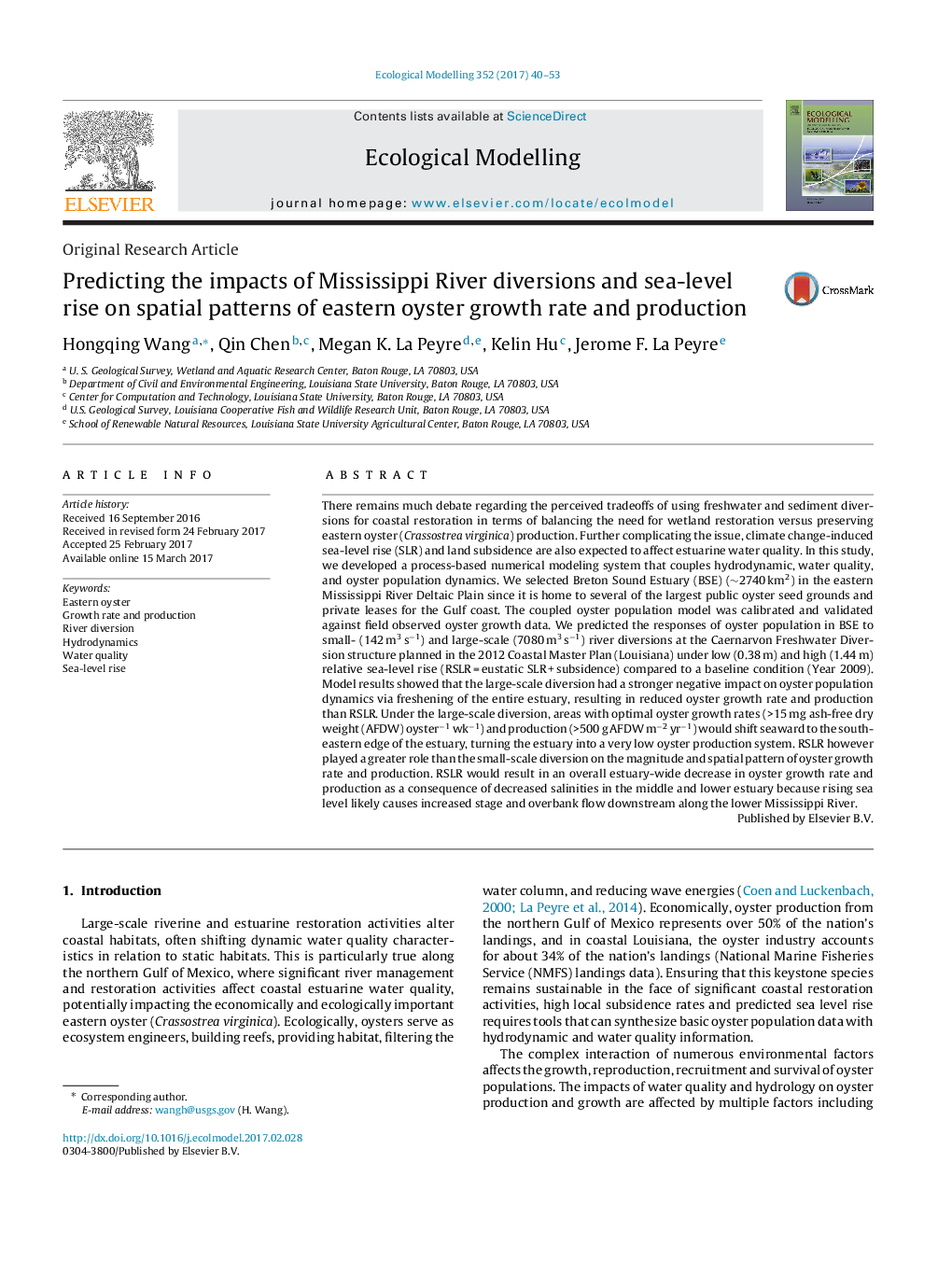| کد مقاله | کد نشریه | سال انتشار | مقاله انگلیسی | نسخه تمام متن |
|---|---|---|---|---|
| 5742246 | 1617395 | 2017 | 14 صفحه PDF | دانلود رایگان |
- A coupled hydrodynamic, water quality, and oyster population dynamics modeling system is developed.
- The modeling system is used to explore the responses of oyster growth rate and production to river diversion and relative sea-level rise.
- Large-scale Mississippi River diversion has a stronger negative impact on oyster growth rate and production than relative sea-level rise.
- Relative sea-level rise tends to increase Mississippi River stage and overbank flow, resulting in decreased estuarine-wide salinity and overall oyster growth rate and production.
- The modeling system can help resource managers to balance the needs of wetland restoration and downstream oyster production.
There remains much debate regarding the perceived tradeoffs of using freshwater and sediment diversions for coastal restoration in terms of balancing the need for wetland restoration versus preserving eastern oyster (Crassostrea virginica) production. Further complicating the issue, climate change-induced sea-level rise (SLR) and land subsidence are also expected to affect estuarine water quality. In this study, we developed a process-based numerical modeling system that couples hydrodynamic, water quality, and oyster population dynamics. We selected Breton Sound Estuary (BSE) (â¼2740Â km2) in the eastern Mississippi River Deltaic Plain since it is home to several of the largest public oyster seed grounds and private leases for the Gulf coast. The coupled oyster population model was calibrated and validated against field observed oyster growth data. We predicted the responses of oyster population in BSE to small- (142Â m3Â sâ1) and large-scale (7080Â m3Â sâ1) river diversions at the Caernarvon Freshwater Diversion structure planned in the 2012 Coastal Master Plan (Louisiana) under low (0.38Â m) and high (1.44Â m) relative sea-level rise (RSLRÂ =Â eustatic SLRÂ +Â subsidence) compared to a baseline condition (Year 2009). Model results showed that the large-scale diversion had a stronger negative impact on oyster population dynamics via freshening of the entire estuary, resulting in reduced oyster growth rate and production than RSLR. Under the large-scale diversion, areas with optimal oyster growth rates (>15Â mg ash-free dry weight (AFDW) oysterâ1Â wkâ1) and production (>500Â g AFDWÂ mâ2Â yrâ1) would shift seaward to the southeastern edge of the estuary, turning the estuary into a very low oyster production system. RSLR however played a greater role than the small-scale diversion on the magnitude and spatial pattern of oyster growth rate and production. RSLR would result in an overall estuary-wide decrease in oyster growth rate and production as a consequence of decreased salinities in the middle and lower estuary because rising sea level likely causes increased stage and overbank flow downstream along the lower Mississippi River.
Journal: Ecological Modelling - Volume 352, 24 May 2017, Pages 40-53
